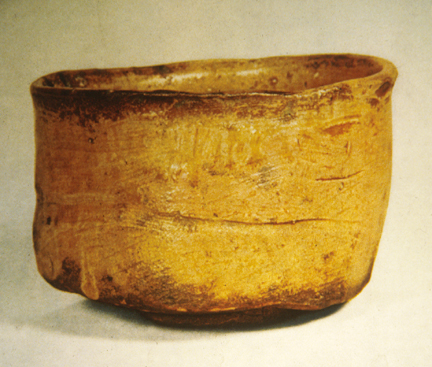Seto is the site where the legendary potter Toshiro was said to have set up his kiln after his sojourn to China to study their pottery making techniques. Pottery was made continuously at Seto from 1223 to the Momoyama period (1615 CE). Local deposits of a light gray firing stoneware clay were no doubt a factor in selecting Seto as a site for his pottery. During the Momoyama period (often referred to as the Golden Age of Japanese Pottery), the wabi-style tea ceremony evolved in association with the Zen sect of Buddhism. Originally a literary term meaning deprivation, the term wabi, in the context of the appreciation of ceramics, came to mean the rejection of luxury for an appreciation of the unadorned, the simple, and the natural. This concept of wabi, originating in the practices of the tea ceremony, had a great influence on the ceramics of Japan. Objects possessing this quality were seen as lacking the ego of the maker, instead possessing the vitality of the natural world. One example sometimes used to explain this idea to the Westerner is that of water dripping over millennia onto a rock that gradually creates a hollow depression. If only the potter could achieve the beauty of such a container, rather than 'making' it happen, then the ideal of wabi could be approached. Born, not made, in essence. This tea bowl embodies this aesthetic. The tea ceremony was originally an exercise in meditation, but the tea masters who practiced the ceremony would become the arbiters of taste in society. The increasing demand for tea ceremony ware resulted in increasing status for the potter.
This is one of the most famous tea bowls in all of Japan. The style is called Yellow Seto and this tea bowl (chawan) is named ASAINA. Its rugged strength and forceful potting account for its name, which is taken from the heroic samurai, Asaina Saburo Yoshihide. Samurai would often select such a bowl as a reward for service to their lords.

Teabowl (chawan) of Yellow Seto, Stoneware
Japan, Momoyama Period, 1568-1615 CE


